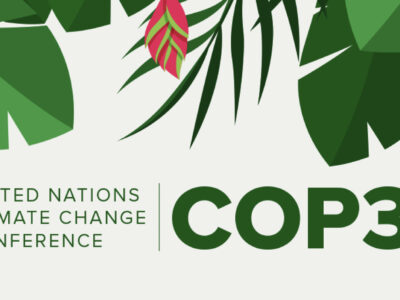Columbia University researchers Laia Andreu Hayles and Daniel Ruiz Carrascal traveled to Colombia last month to investigate the impact of climate on high-altitude ecosystems in the Andes.
Supported by the Lamont-Doherty Earth Observatory Climate Center, Andreu and Ruiz are exploring the potential of several high-altitude tree species to reveal information about past climate variability and change. Working with Kevin Anchukaitis at the LDEO Tree Ring Lab, the researchers hope to establish the long-term context necessary to evaluate the rate and extent of current climatic change.
The team’s research is conducted in conjunction with Colombia’s Escuela de Ingeniería de Antioquia (EIA), where scientists including Maria del Pilar Arroyave, Maria Elena Gutiérrez Lagoueyte, and Paula Andrea Zapata Jaramillo have been exploring the impacts of climate on the Andes’ delicate páramo ecosystem since 2004. By working in concert, the two groups are planning to link dendrochronological information with previously collected environmental data in order to expose long-term trends in climate and forest dynamics.
To date, the Colombian team has cataloged reductions in biodiversity, altered circulation dynamics, an increase in the frequency of high altitude fires, and changes in surface water supply. More information is available here.
Such changes are particularly troublesome in the páramo, where more than 60% of plant species are endemic. The high level of endemism is related both to the fragmented nature of mountaintop ecosystems and to the extreme conditions faced by high-altitude species. The forbs, sedges, stem rosettes, and tussock grasses common to the region have evolved the ability to withstand strong winds, dramatic temperature changes, low atmospheric pressure, and intense ultraviolet radiation.
Uniquely adapted to these conditions, such species are highly vulnerable to climatic change. Changes already observed, including higher temperatures and decreased relative humidity, stress individuals and force the vertical displacement of vegetation. If such changes continue unabated, they may eventually lead to species extinction.
Because the páramo is the primary water source for the Andean highlands, species extinction is not the only thing at risk. Indeed, the Andes are unique in the number of large urban centers (including, for instance, Bogotá and Quito) dependent on mountain ecosystems for their water. As a result, the hydrological implications of climate change for the Andes may be severe. They include a less stable runoff regime, less water storage capacity, and reduced water availability in the dry season.
In this sense, the team’s research informs our understanding of ecosystem integrity, while helping to inform social policy. The Colombian group has documented changes based on meteorological records, hydrological data, satellite information, and long-term environmental monitoring. Unfortunately, even in the best cases, these observations are only available from 1950 to the present.
“With this piece of our study,” explains Ruiz, “we aim to discover the hidden long-term trends in climatic conditions.”




I do not even know how I ended up here, but I thought this post was
good. I do not know who you are but definitely you’re going to a famous blogger if you are not already 😉 Cheers!
Wow that was odd. I just wrote an extremely long comment but after I clicked submit my comment didn’t appear. Grrrr… well I’m not writing all that over again.
Anyways, just wanted to say superb blog!
[…] Project blog post […]
[…] Project blog post […]
It will be sad and embarrassing if humanity as a whole fails to take notice of this huge problem at hand and prevent many species from going extinct.